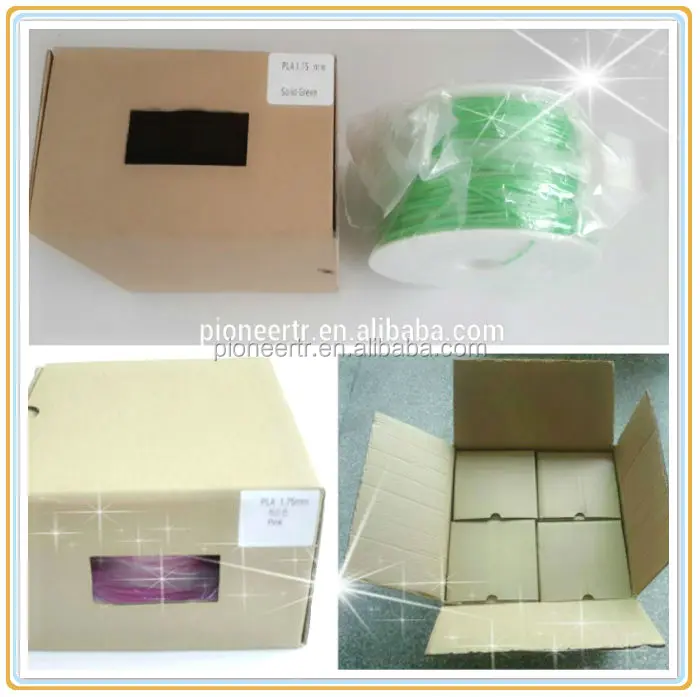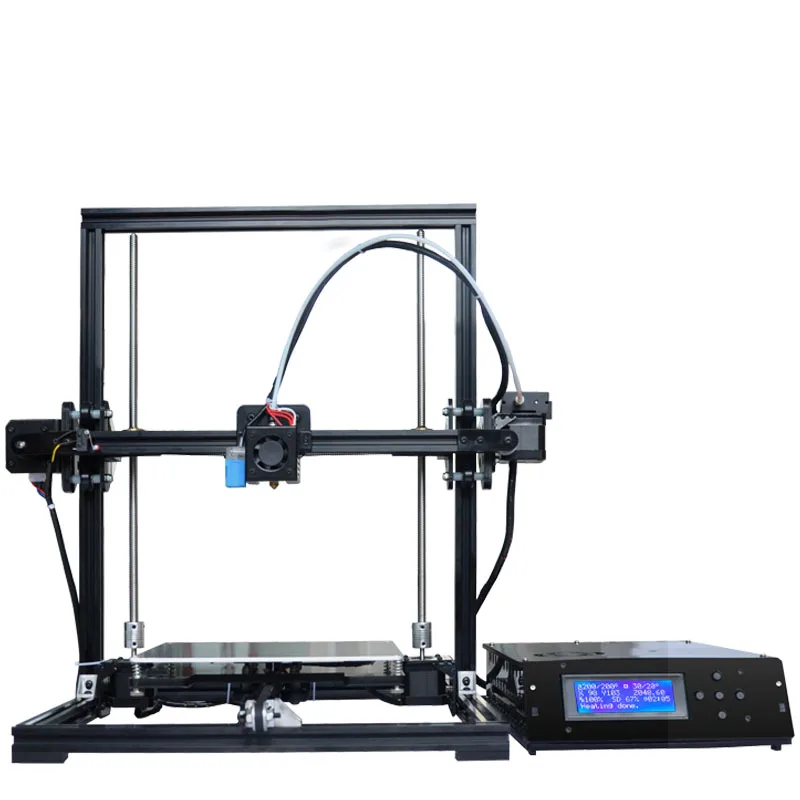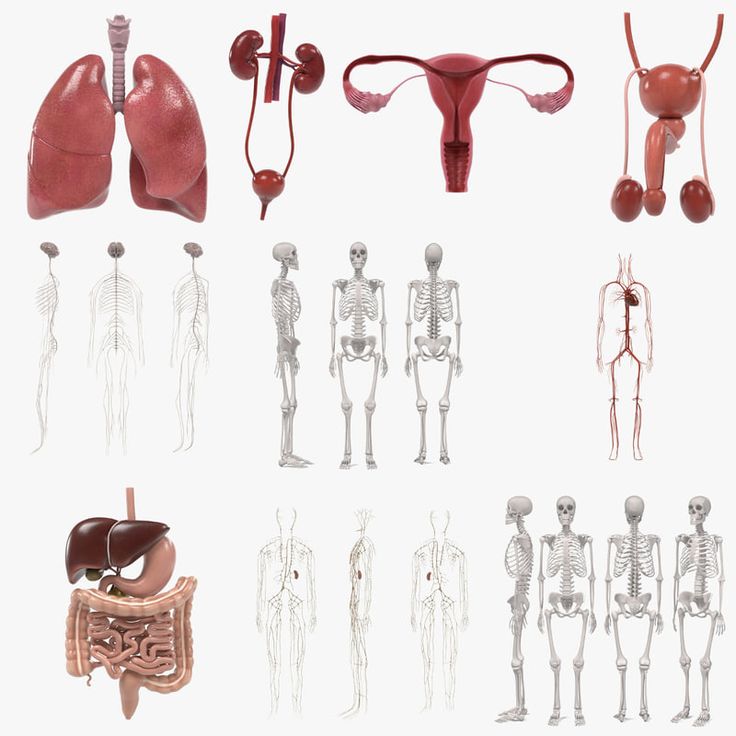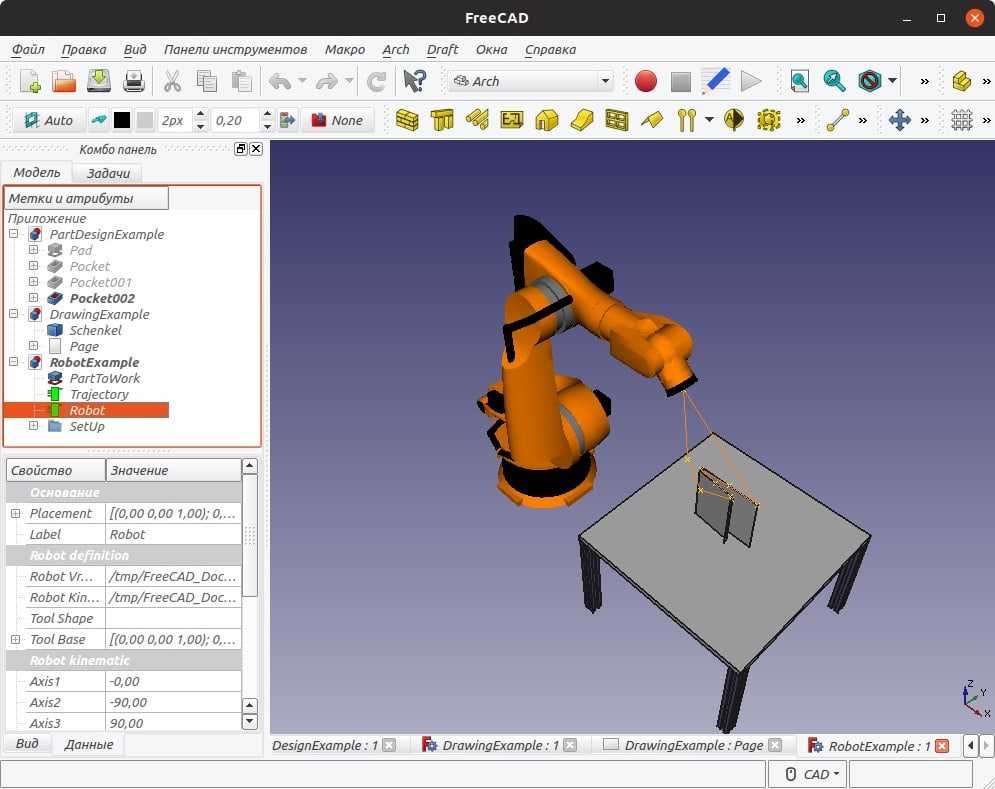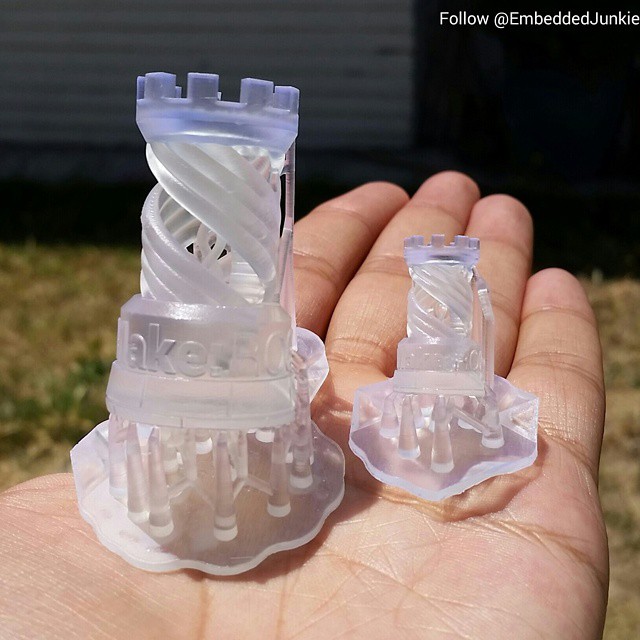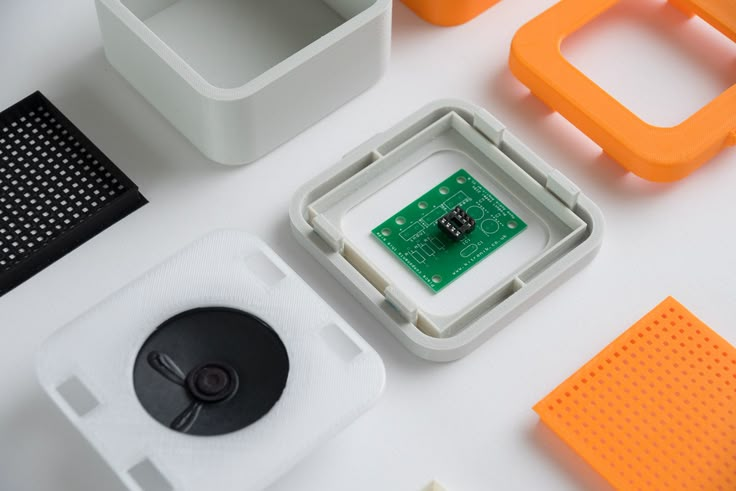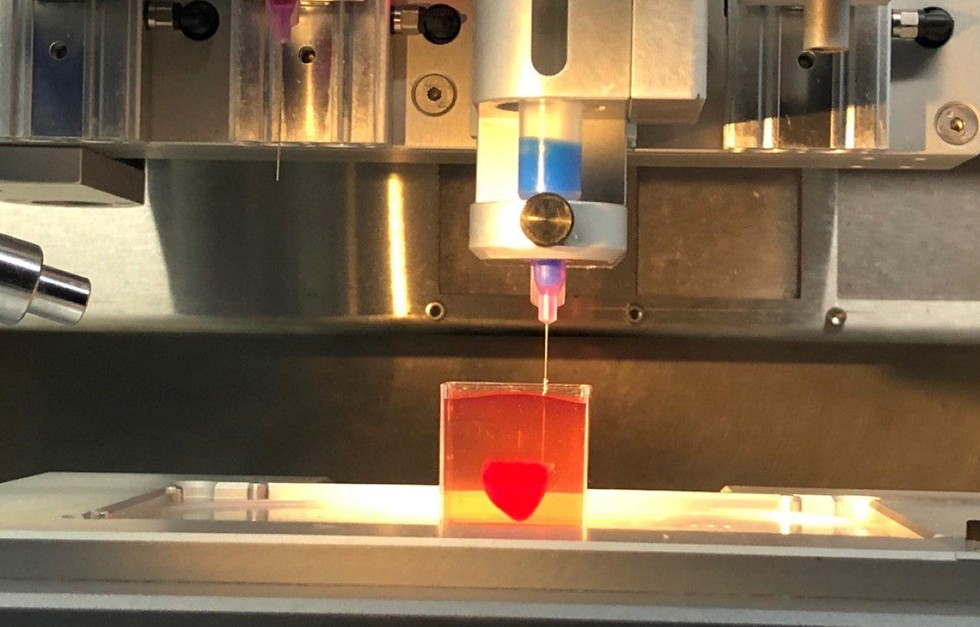Vacuum bags for 3d printer filament
Vacuum Seal System for Filament/Food Storage Bags 10 pics /pack
Vacuum Seal System for Filament/Food Storage Bags 10 pics /pack plusminuscrossarrow-leftarrow-rightarrow-bottomcartdropdown-arrownextpreviousheartsearchtickfacebookfancygoogle-plusinstagrampinteresttumblrtwittervimeoyoutubelockvideo-playsaleAdd SV01PRO to cart and check out to save $60!
3-7 days for delivery from US/EU/UK/CA/AU warehouse!
{{else}} {{#unless split_search}}
{{else}}
{{/unless}} {{/if}}
US $16.99US $22.99
US $16.99US $22.99
Shipping from
US(to US only)Czech(to EU only)China
Price
US $16.99US $22.99
Variant
US(to US only) - US $16. 99Czech(to EU only) - US $16.99China - US $16.99
Quantity
1
💰 Earn Points with Login:
Earn points and get membership exclusive perks with your account login.
Sign up now and get $3 off for your first purchase. Click to learn more.
🎁 Get Rewards with Your Points
Turn points into discount code.
Get early access to sales and new products before the rush.● 1-year Warranty & 14-day Return for 3D Printer
1 Month Warranty for accessoriesEvery printer comes with the warranty of 12 months, and we offer 14-day exchange/refund/return guarantee.
Learn more● Technical Support
Sovol Support Team is available via email and live chat.
Join Sovol User Group to get tips from employees and community.
Sovol Vacuum Seal System for Filament/Food Storage
Description:
When the filament is exposed to damp air for a long time, it becomes brittle and printing fails.
A vacuum bag is a great way to solve this problem by keeping the filament in vacuum storage when you're not using it. And can be reused many times.
The bag is food grade and could be used as food packaging.
Package Including:
10*Food grade vacuum compression bags (PA+PE material)
1*Pump (ABS)
1*Sealing clip
10*Temperature and humidity indicator cards
10*Desiccant bags
Features:
Airtight to keep the filament dry and safe.
Moisture-proof and Dust-proof to keep the content clean.
Low-temperature and High-temperature resistant from -20℃ to 100℃.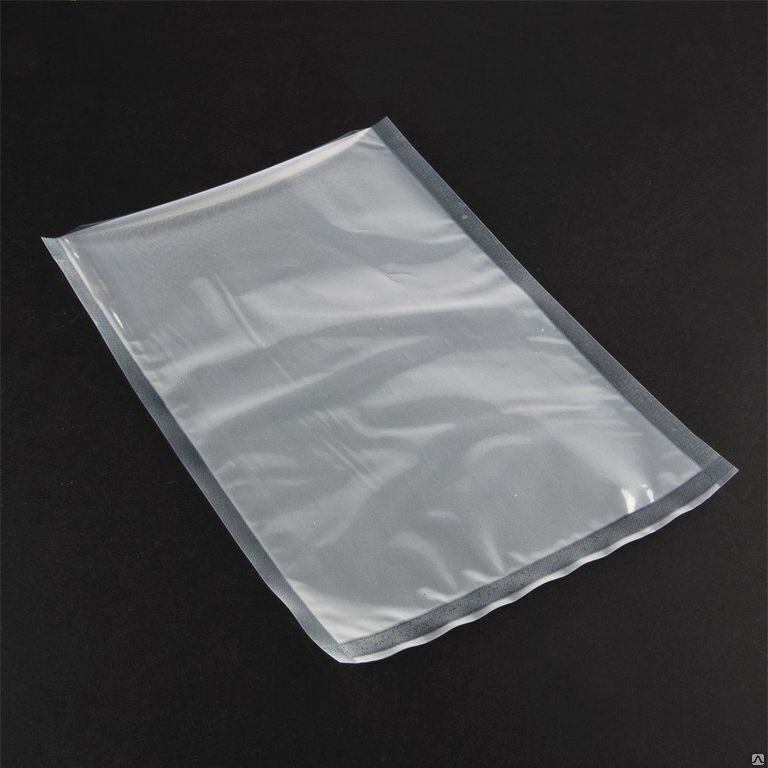
Fits 1kg filament spools with a diameter less than 20cm.
3D Filament Storage Vacuum bags – Kobee
Filament Storage Vacuum bags - 5 Pack with Pump
Featured Products
Inkjet / Laser Printable Sticker Vinyl Paper Multi Packs
$9.99
Solder Sleeve Wire Splice Terminators - 100 Pack
$9.99
Arduino Uno R3
Sold Out
Arduino Uno R3 Starter Pack
Sold Out
Arduino Uno R3 Essentials Pack
Sold Out
24 LED RGB Neopixel Rings - WS2812B
$8.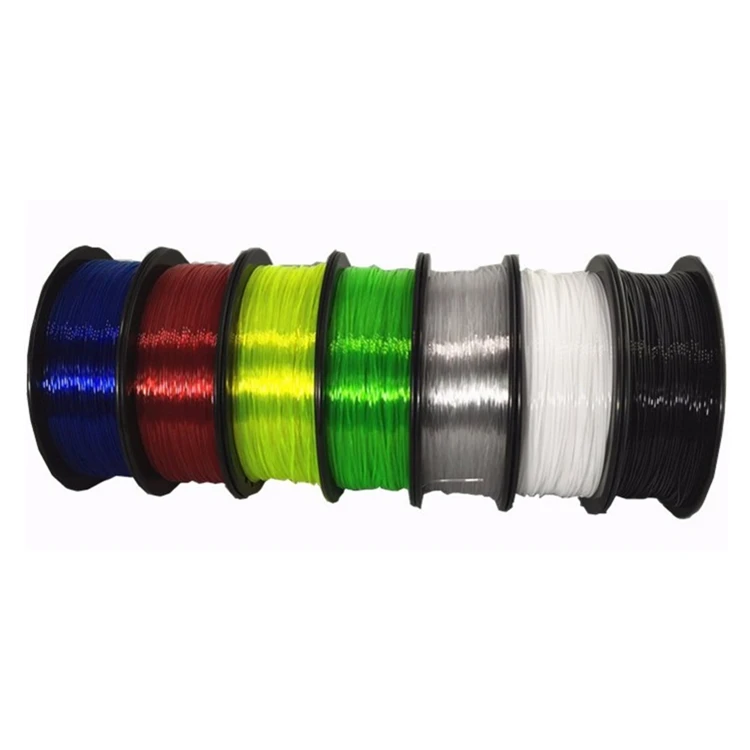 99
99
- Free Delivery
Over $120
- Low Prices
- Awesome Support
- 100%
Australian Owned
- Description
- How To Use
- Reviews
One of the biggest enemies of 3D filament is humidity and humidity absorbtion in your filaments.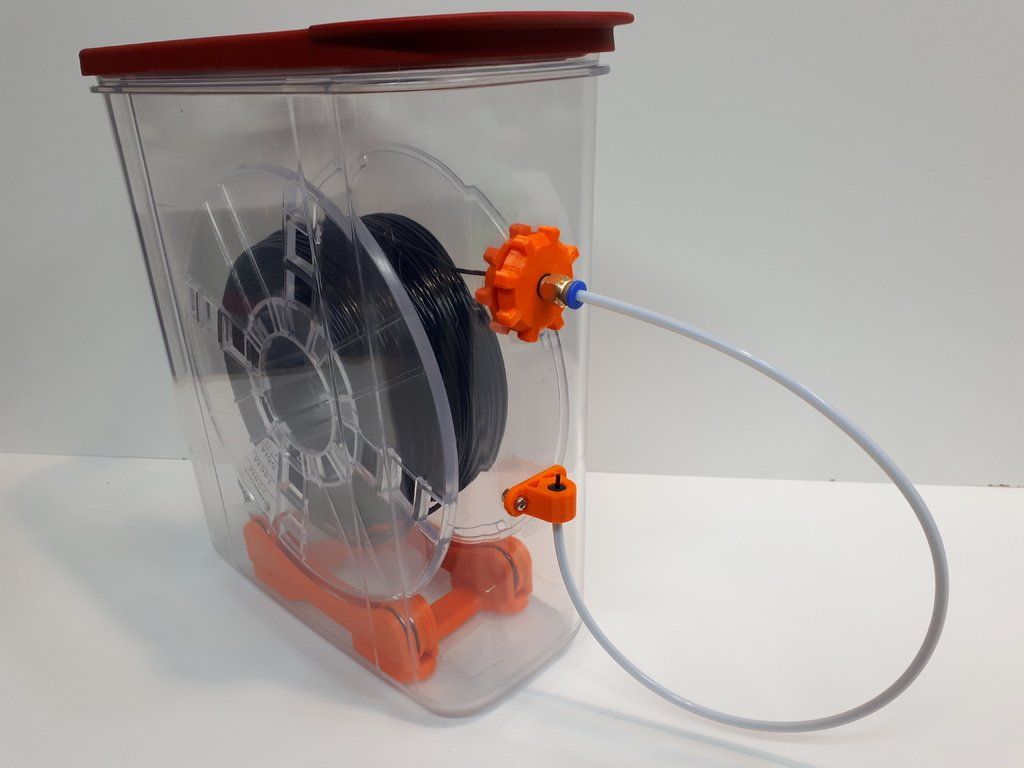 High moisture levels in a filament can lead to problems such as extruder / hot end jam and deegredation of filament print quality
High moisture levels in a filament can lead to problems such as extruder / hot end jam and deegredation of filament print quality
Our 3D filament vacuum storage bags allow you to store filament for long durations without having to worry about needing to dry your filament when you want to use it next
Each set comes with 5 reusable vacuum bags with a pump which can remove air from the package just like the day you got it
Features
- Hand Pump Material: ABS + Silicone
- Vacuum Bag Material: PA+PE, BPA Free
- Size: 33cm x 40cm
- Fits nearly all standard filament spools on the market
- Double sealed zipper for air tight protection
Package Inclusion
- 1 Hand Pump
- 5 Vacuum Bags
How To Video
One of the biggest enemies of 3D filament is humidity and humidity absorbtion in your filaments.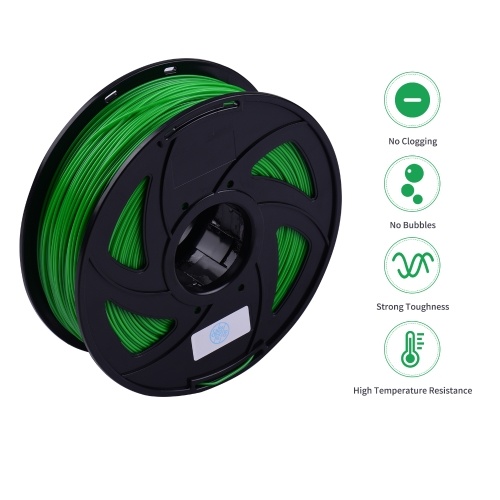 High moisture levels in a filament can lead to problems such as extruder / hot end jam and deegredation of filament print quality
High moisture levels in a filament can lead to problems such as extruder / hot end jam and deegredation of filament print quality
Our 3D filament vacuum storage bags allow you to store filament for long durations without having to worry about needing to dry your filament when you want to use it next
Each set comes with 5 reusable vacuum bags with a pump which can remove air from the package just like the day you got it
Features
- Hand Pump Material: ABS + Silicone
- Vacuum Bag Material: PA+PE, BPA Free
- Size: 33cm x 40cm
- Fits nearly all standard filament spools on the market
- Double sealed zipper for air tight protection
Package Inclusion
- 1 Hand Pump
- 5 Vacuum Bags
How To Video
Plastic 3D Printing Material Storage
Did you know that some of your 3D printed objects may have partially or completely failed just because of the moisture content in the filament you used? This kind of moisture is invisible to the naked eye, so the 3D printer user often blames their print settings or the 3D printer itself.
Some people have tried to solve this problem by creating more or less sophisticated storage solutions for 3D filaments, such as filament dryers or special containers. The problem is that most of them are bulky, energy-consuming, slow, expensive, or time-consuming to make.
There is a solution to this problem: the filament will not only remain completely dry, it will be easily accessible and easily identifiable.
The filaments used for 3D printing are polymers, meaning they can break down in a process known as hydrolysis. If your spools are just lying around the printer, you will see problems during printing due to moisture. Your fiber has an inherent quality that makes it attract water molecules. As a result of moisture from the air, the polymer breaks down when heated at the point of extrusion, weakening the filament.
The nylons will become saturated with water in as little as 18 hours when exposed to the ambient air. The situation is even worse with specialty filaments like PVA.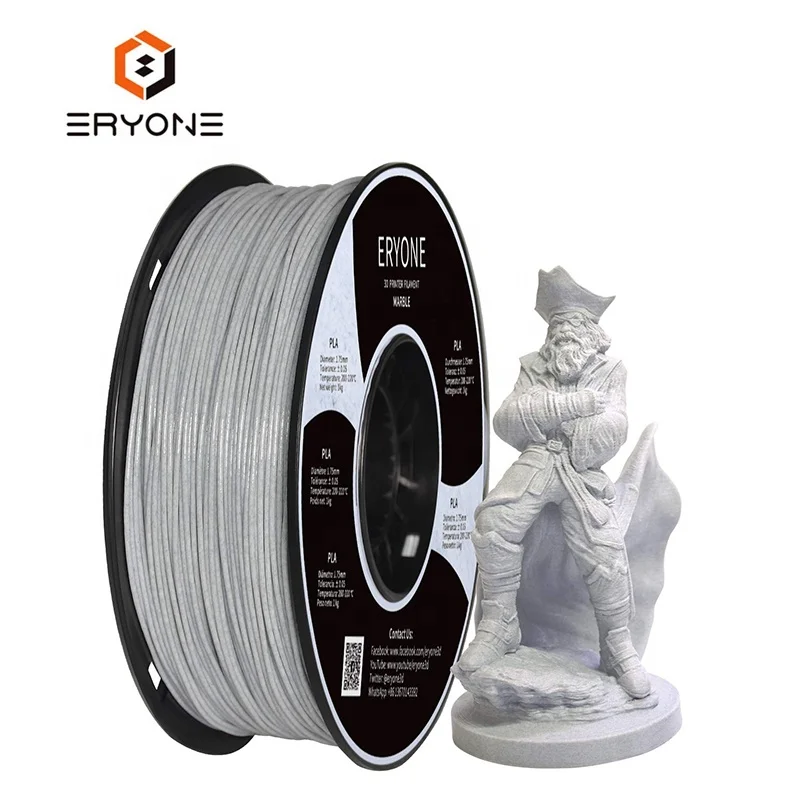 PVA is extremely hygroscopic and must be stored in a sealed box or container. Otherwise, it will draw so much water from the air that it will become useless. But it's not just about nylons or PVA, PLA and ABS also attract water from the air, only to a lesser extent.
PVA is extremely hygroscopic and must be stored in a sealed box or container. Otherwise, it will draw so much water from the air that it will become useless. But it's not just about nylons or PVA, PLA and ABS also attract water from the air, only to a lesser extent.
The effect of water attraction can lead to one or more of the following problems: increased brittleness, diameter expansion (potential problems with Bowden tube printers), filament breakage, tearing, etc. All of these will increase printing complications. You also need to consider the fact that 3D printing filament that has absorbed water will require a higher temperature to extrude properly. As the filament passes through the hot extruder, steam or bubbles will form, resulting in an undesirable result.
But there are very simple, effective and cheap solutions.
Get yourself some vacuum bags. Only buy bags of the type that are equipped with a vacuum valve that allows you to vacuum all the air with a standard household vacuum cleaner.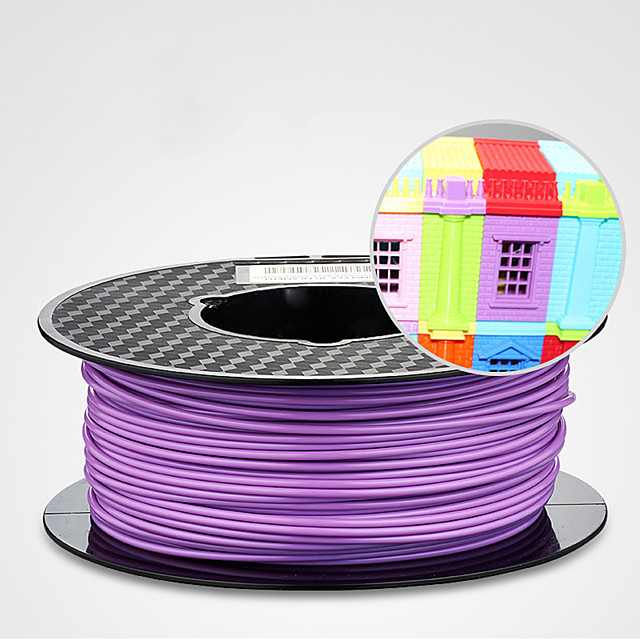 They usually also provide protection against water, odors, mold, dust and pests. Or, buy only vacuum bags with a double zipper line, as they allow you to maintain a better vacuum.
They usually also provide protection against water, odors, mold, dust and pests. Or, buy only vacuum bags with a double zipper line, as they allow you to maintain a better vacuum.
Usually these packages are transparent. Use filament clips when storing coils in vacuum bags. The endpoints of the filaments can be quite sharp and can easily punch a hole in vacuum bags, exposing the filament to the humid air you are trying to protect it from.
Since the vacuum in the bag is not absolute, you need a solution to absorb any possible remaining moisture. We recommend simply adding silica gel beads to the bag, which are very effective desiccants. You can buy several ready-to-use silica gel packs that can be reused if you dry them in the oven. Or take from previous used coils. There is silica gel with moisture saturation indicator. This amorphous, highly porous, synthetically made silica gel uses an environmentally friendly color indicator so that when the beads absorb moisture, they change color from blue to pink (depending on the ambient humidity level).
The only thing missing now is an appropriate container in which to put the silica gel balls. Any transparent vessel with small holes, slits or slits will do. This is necessary so that the silica gel beads can attract any remaining moisture left in the vacuum bag.
Once your balls have changed color, simply take them out of the container, place them on a baking sheet and let them dry for 3 hours at 120°C in your oven.
Another great solution for creating a moisture-resistant storage environment is a desiccant container. The technology works through an electronic dehumidification system that constantly dehumidifies the inside of the box. As a result, you will practically limit the contact of your filament with moist air.
Transparent storage boxes with closed lids are another way to properly store 3D printing filaments. The advantage of this type of storage is that it can be used in the 3D printing process. The idea behind sealed lids is that no new moisture can get in.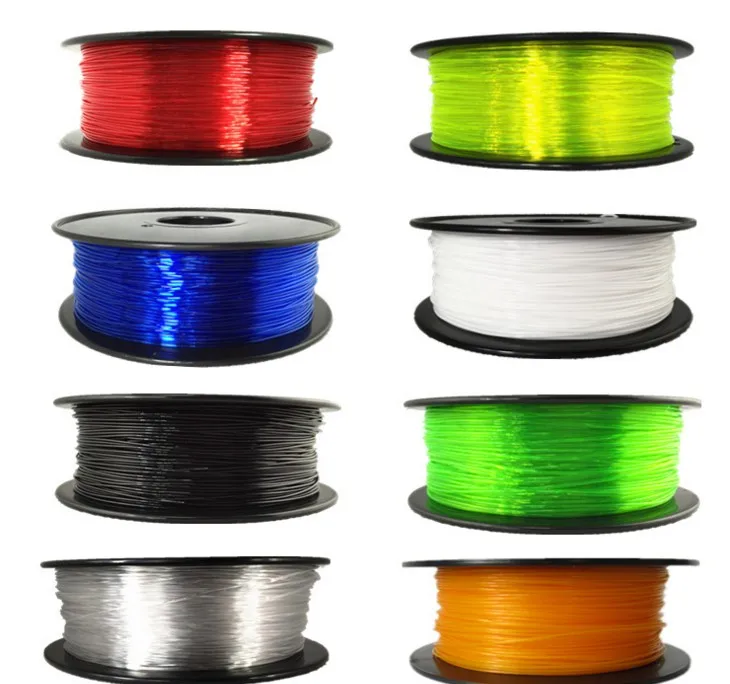 The need for transparency arises from a practicality point of view.
The need for transparency arises from a practicality point of view.
What about drying a filament that is already saturated with moisture? To dry the thread, you can use a universal device - a home oven. In particular, you will need a fan oven because this type of oven distributes air evenly throughout the interior. The uniform air flow means that warm air is constantly circulating around the coil. It is better to check the temperature and duration of drying with the manufacturer, depending on the type of polymer.
An important factor to consider when deciding whether your filament is suitable for kiln drying is the glass transition temperature (Tg) of the material. This is the temperature range in which the polymer changes from a hard glassy material to a soft rubbery material. For example, PLA has a Tc of only 60°C, which makes it unsuitable for oven drying unless your oven is set to the minimum heat setting.
Using the above guide, you will be able to properly store filaments and improve the quality of your 3D prints.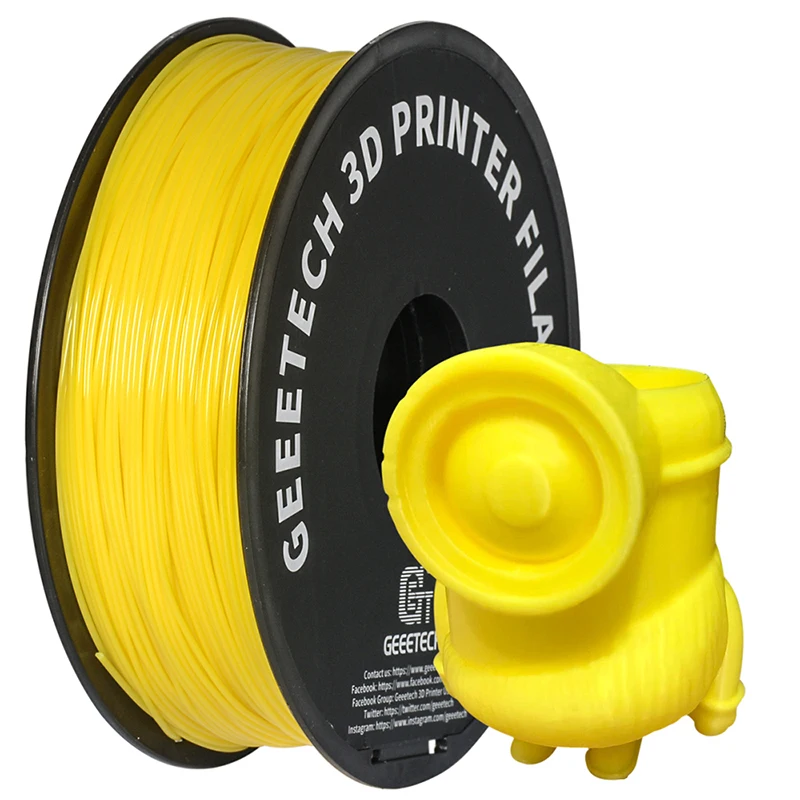 And everyone chooses the way of storage.
And everyone chooses the way of storage.
← Uniz Slash Plus High Speed 3D Printer Review | The largest 3D printed boat in the world →
Proper storage of filament
3D printer filament requires special storage conditions. For the most common PLA, ABS, PETG and TPU filaments, the main requirement for storage is the absence of moisture. Also important is the absence of dust and solid particles during storage of the thread. Let's take a closer look!
What's so dangerous about humidity?
Most materials used in FDM 3D printing can be considered hygroscopic, meaning that they absorb water molecules rather than repel them. This does not mean that the plastic filament will act like a sponge, but if you leave it outdoors, the print quality will deteriorate. Even what may be considered relatively low environmental humidity can damage the filament through a cumulative effect.
Storing the filament in an airtight container is a must to prevent absorption of moisture from the air, but it is even better to use airtight containers or containers with a desiccant (silica gel).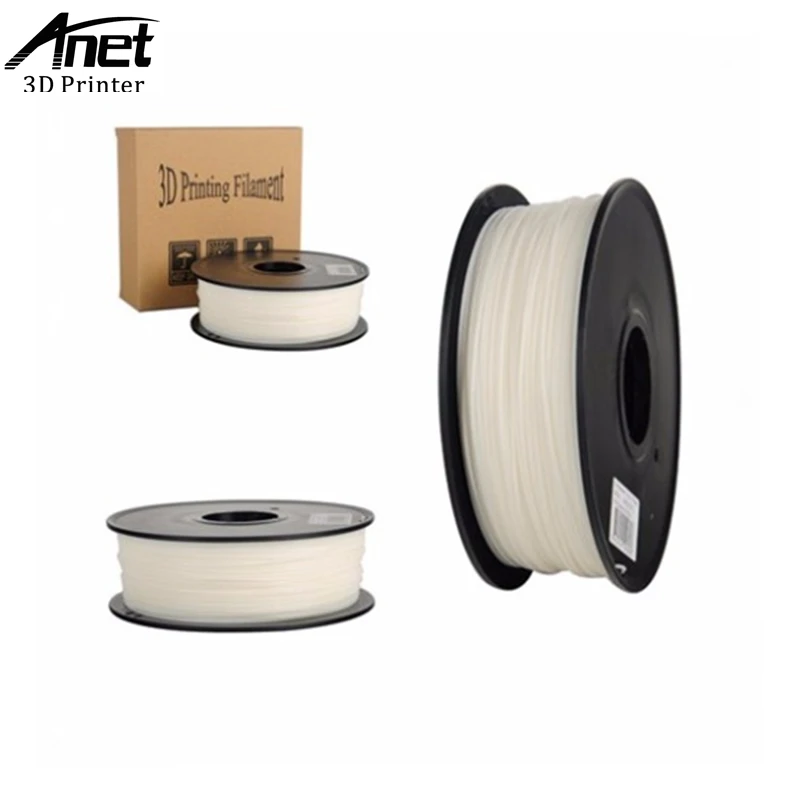 See the end of this article for more information on silica gel.
See the end of this article for more information on silica gel.
How do you know if your filament is wet and needs to be dried? The answer to this question can be found in our other article about drying the filament
Need for storage
Leaving the filament in the open air, solid particles and dust begin to settle on its surface. These small “contaminants” can lead to reduced print quality, and sometimes they even cause the nozzle to clog during printing.
Replacing or cleaning the nozzle is often a problem on some printer models. Avoid getting dust on the filament. All this can be achieved by simply storing the filament in closed containers or other places protected from airborne particles. Also use a dust filter (see Add-ons section at the end of the article), through which the filament slides during the printing process and traps “dirt” particles before they enter the extruder.
Best filament storage solutions
Below are FDM storage solutions.
Specialized box
This box usually holds two spools at once, which is very convenient when printing with two plastics at once.
Universal specialized container for storage and supply of filament. This solution is not just a plastic box, but also various sensors, a screen for displaying temperature and humidity inside the box.
Boxes are available both for one reel and for two reels of 750 g each, sometimes a 2 kg reel can be placed there. In some models, for convenience, special rollers on bearings are provided that allow the spool to rotate freely when it is used in printing.
These units often have a pair of 100 gram silica gel bags installed rather than heating elements.
Prices for ready-made solutions vary and you can find the perfect option for yourself.
Drying cabinet
The adjustable shelves of this cabinet can be adapted to any size and volume of filament spools.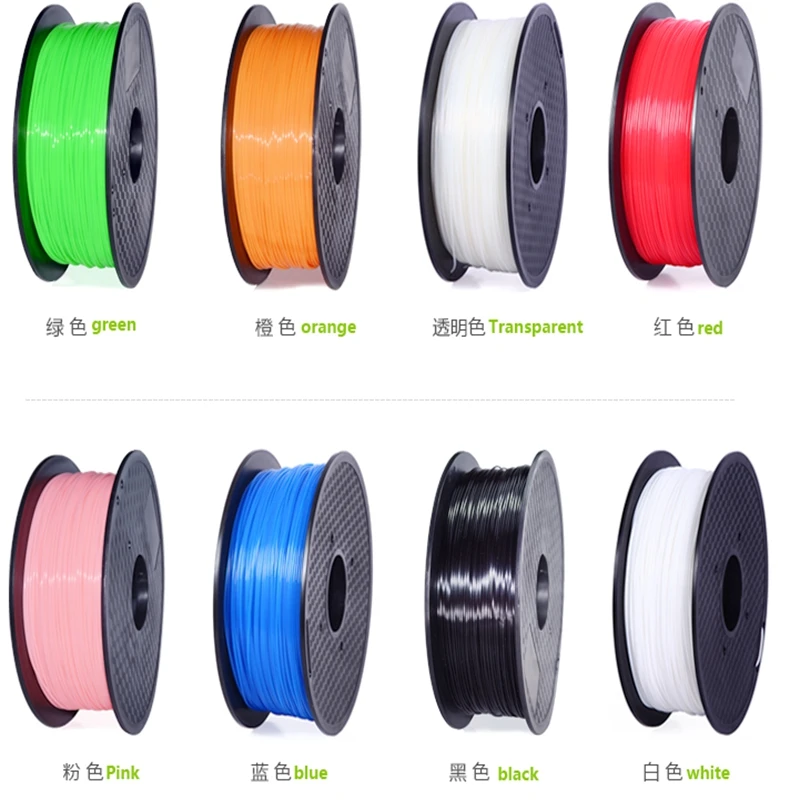
Dry cabinets - the new player in filament storage. Generally they are intended for professional cameras and other photographic equipment that can be damaged by moisture, but they are also sold for other moisture-sensitive items. Why not use it for 3D printer filament?
Available in sizes from 30 to 125 liters, dry cabinets are very reminiscent of wine coolers with their glass doors and elegant appearance, a big plus for those who love aesthetics and beauty. The digital screen tells you the temperature and humidity inside the cabinet, these parameters can be changed by yourself.
Of course, such a cabinet is expensive, but with the right configuration of the shelves it can hold a lot of reels with plastic and maybe even a couple of wine bottles will fit in there.
Storage box lite
This is a cheaper version of the filament storage box than the specialized box. Only one coil can be placed in such a box.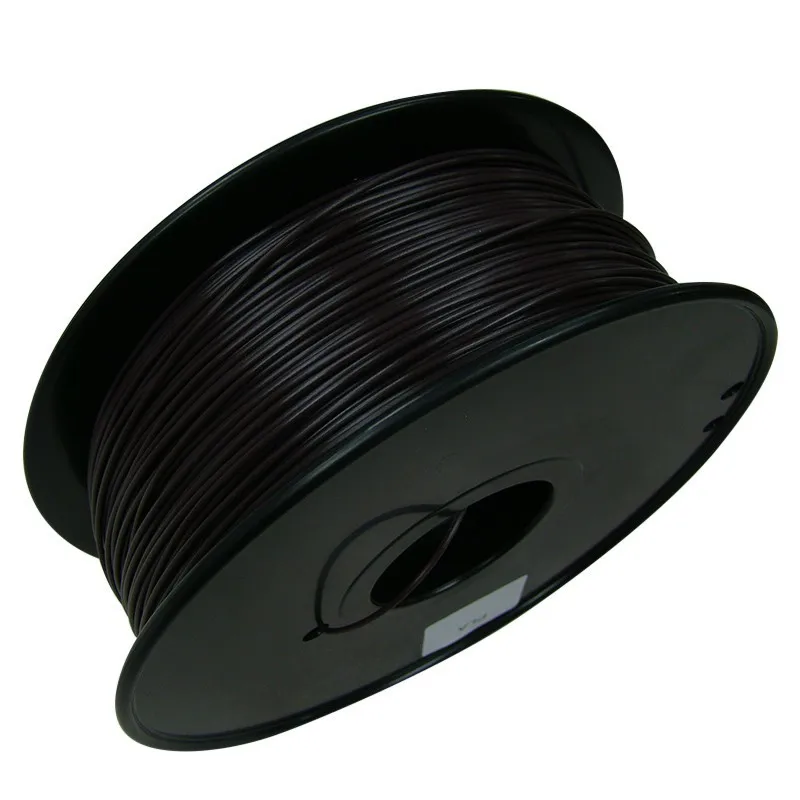 Equipped with a battery-powered temperature and humidity sensor. The LCD screen allows you to get information about the storage conditions inside the box.
Equipped with a battery-powered temperature and humidity sensor. The LCD screen allows you to get information about the storage conditions inside the box.
The box has a long teflon tube to connect to the printer, a place on the bottom of the silica gel container and a very tight lid. Such a single storage of coils allows you to quickly get the necessary container with the necessary material during printing and put it into printing. This use will prevent moisture and other particles from getting onto your print media.
Vacuum box
This filament storage container takes a distinctly different approach to storing reels. The container itself is designed for long-term storage, and not for actively drying the filament or feeding it into the printer, as other options do.
The box is made of durable plastic, which is able to withstand certain loads when pumping out air. Equipped with 4 durable, plastic latches and a valve in the middle of the lid.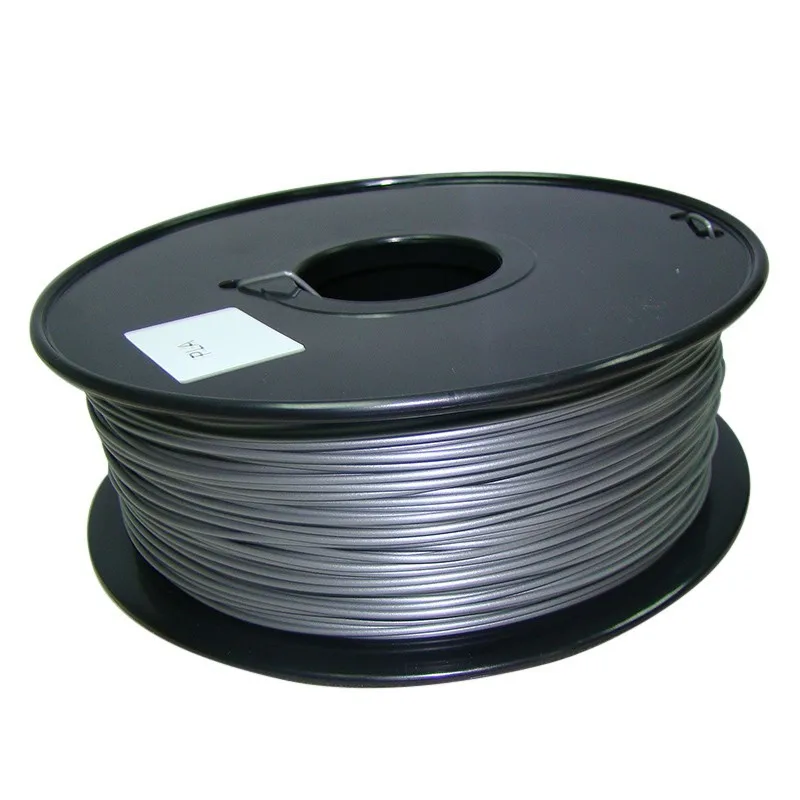 The valve is designed to pump air out of the container using a special pump.
The valve is designed to pump air out of the container using a special pump.
These containers are very airtight and can safely store your roll of plastic for a long time. You can also put a bag of silica gel inside. The only downside is the price.
There are cheaper options, but they are already without such powerful latches.
DIY
Now, let's look at options that you can make yourself. Some are a little more complex and functional, while others are quite light and affordable.
DIY box (Source: RichRap via Thingiverse)
This solution is perfect for storing filament if you want to do it yourself. All ready-made solutions practically do not differ from this option, the only difference is the appearance.
This DIY box is based on a reptile heating mat, placed on the bottom of the box, and contains silica gel sachets. A temperature and humidity sensor is installed that monitors indicators inside the box.
3D components are available on the Thingiverse build page. You can use REC
plastic to print them. The remaining components will need to be bought separately and it is better to take a pair at once, it will be cheaper and you will have more space to store the plastic spools.
As a result, you will get a great cheap box with good features.
Airtight Roll Container
Generally made specifically for pet food, but also great for storing lots of plastic spools. If you think that you have too many spools of plastic and not a single container can cope with such a volume, then you are mistaken! This is not only a huge container, but it is also on 4 swivel wheels. It will be extremely easy and convenient to move it. Tightness at a height, because. it was developed to store food, and as we know, food is also hygroscopic.
A large amount of silica gel can be put on the bottom, which will completely get rid of moisture inside the box.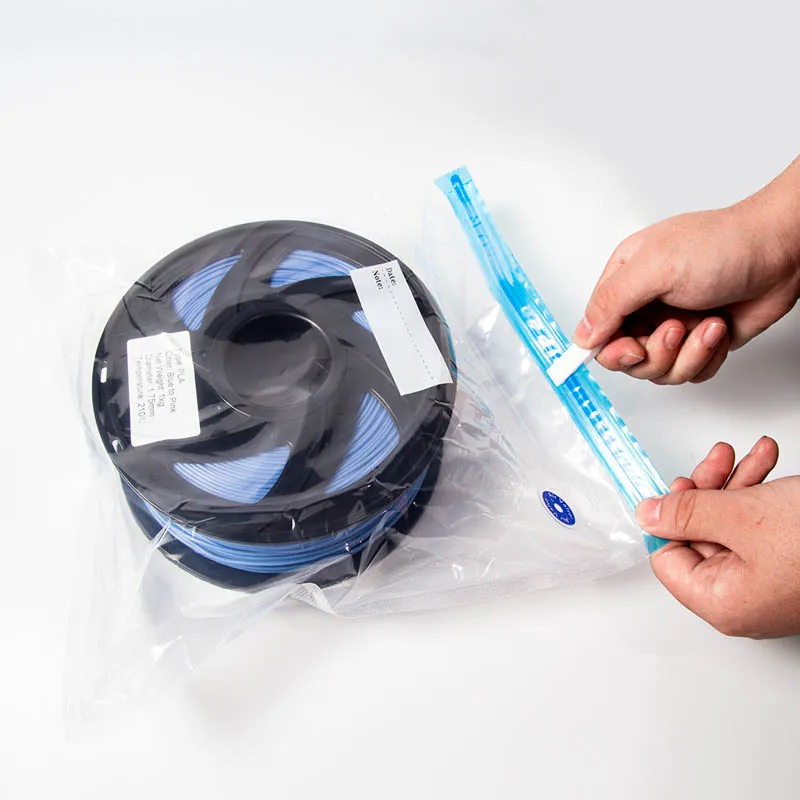 The only disadvantage of such huge boxes is that when you need to get the coil that lies at the bottom, you will have to get all the coils lying above first.
The only disadvantage of such huge boxes is that when you need to get the coil that lies at the bottom, you will have to get all the coils lying above first.
Price - affordable for this amount of usable space inside.
Zip Lock Bags
Resealable bags have always been a popular storage item for filament. Such bags are made of more durable and thicker plastic, so that moisture does not penetrate into the inside of the bag. A good zip lock, when properly closed, will ensure tightness.
Even though the pouches are not as strong as a box and you certainly can't print directly from the pouches, they do the job just as well as any other sealed container. Only one coil is placed in such a package. But at a completely low price for such a package, you can buy a lot of them and use them for a long time.
There are also zip bags with an indicator strip that will show the humidity inside the bag
Vacuum storage bags
Many of us are familiar with vacuum storage bags.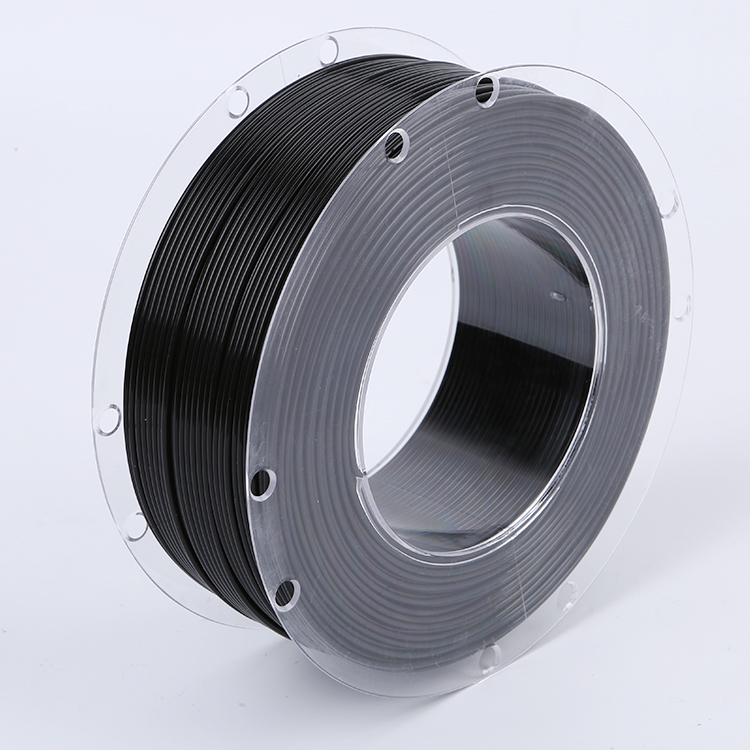 Most popular for storing and transporting clothes and the like, these bags work with either a hand pump (often included) or a household vacuum cleaner (for faster air extraction). A simple solution with a valve, just put the coil (you can have several) in a bag and pump out the air - that's it.
Most popular for storing and transporting clothes and the like, these bags work with either a hand pump (often included) or a household vacuum cleaner (for faster air extraction). A simple solution with a valve, just put the coil (you can have several) in a bag and pump out the air - that's it.
It is of course recommended to add silica gel before pumping out all the air, but this is not always necessary.
These bags are available in different sizes and opacity (transparent and opaque). In opaque bags, it is best to put plastic that is affected by the sun's rays.
The price for these bags is low
OPTIONS
Filament End Clamp / Holder
One of the many Filament Clamps available on Thingiverse (Source: aliendagwood via Thingiverse)
go there will be an overlap. So if your filament spool doesn't have a hole around the edge (REC spools do) to secure the free end, or the free end doesn't quite reach the hole, try printing this accessory.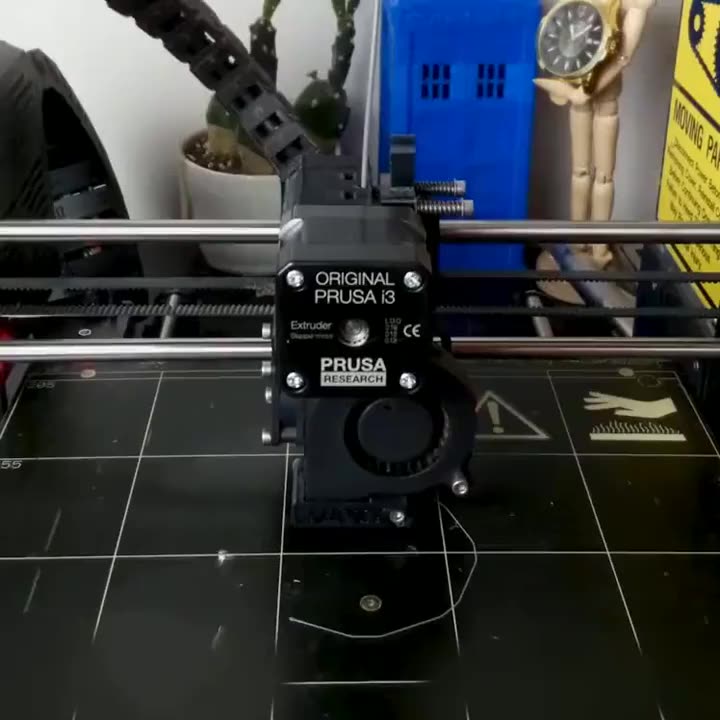 A small clip fits onto the outer rim of the spool and securely holds the end of the filament. Download here
A small clip fits onto the outer rim of the spool and securely holds the end of the filament. Download here
Dust filter
Dust is known to be the enemy of 3D printing. To avoid dust accumulating on the surface of the rod, you can print a small capsule into which a sponge or piece of cloth is inserted and when the rod passes through this capsule, all the dust remains outside the extruder. You can also download it on Thingiverse
Silica gel
In general, silica gel is a dried gel formed from supersaturated solutions of silicic acids. It absorbs moisture very well.
Most often, silica gel is found in portion packs from 5 to 500 grams. The bags themselves contain silica gel balls, the size of the balls is from 2-4 mm.
Sometimes there are options without bags, there are just balls and you pour them into the right place in the right amount.
Color indication.